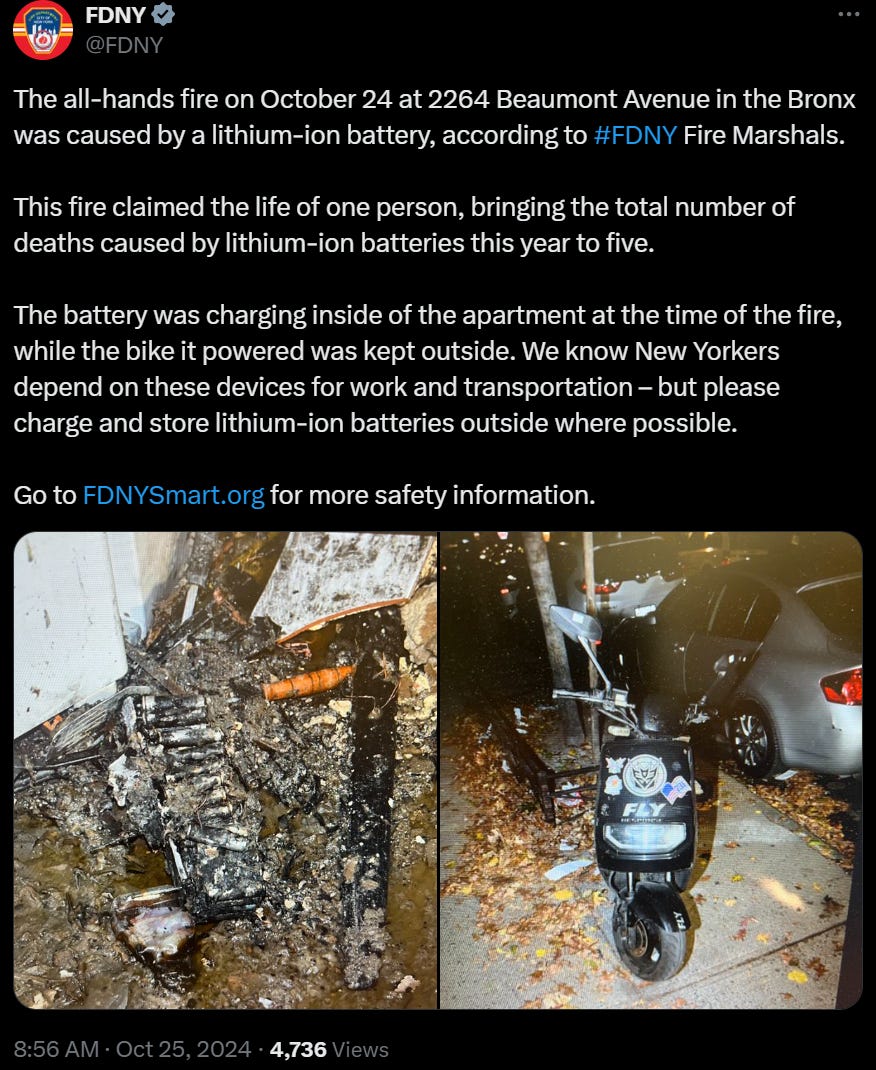On October 27, 2024, a lithium battery recycling plant in Fredericktown, Missouri, erupted in flames, sending smoke billowing across the town. Early reports from ABC7 Chicago indicated that, fortunately, no workers were seriously injured. However, thick smoke forced evacuations in nearby neighborhoods and raised major concerns about the pollutants released by such fires.

This incident occurred just days after another lithium-ion battery-related tragedy in Belmont, New York, where a fire, reportedly triggered by a battery explosion, killed one man and seriously injured another. According to News12, the Belmont incident led to a large emergency response, underscoring the clear dangers associated with lithium-ion batteries, technology often touted as essential to the “clean energy” movement despite its inherent instability and risk of thermal runaway.
With battery-based energy storage expected to expand dramatically in the coming decades, thermal runaway is more than a fluke danger; it’s an intrinsic risk. This hazard needs to be fully understood before we place these power plants, and potential chemical bombs, near densely populated areas.
Let’s break down how we got here, why lithium-ion batteries rose to dominance, and how the reality of thermal runaway casts a shadow on a battery-powered future.
A Brief History of Batteries and the Reign of Lithium-Ion
The concept of batteries traces back over 200 years to Alessandro Volta, who created the first device capable of producing continuous electric current. Volta’s voltaic pile gave birth to the concept of energy storage, eventually leading to batteries that could store and release electricity efficiently. In the 20th century, the electrochemical storage market expanded with the development of lead-acid batteries, which became widely used in vehicles, and nickel-cadmium (NiCd) batteries, a lightweight, rechargeable option used in early consumer electronics.
Despite these advancements, batteries remained clunky and inefficient by today’s standards. Then came the lithium-ion battery in the 1990s: a lightweight, energy-dense alternative that fundamentally changed our approach to energy storage. Lithium-ion cells have since become ubiquitous, powering everything from smartphones to electric vehicles and industrial power grids.
Their compact size, high energy density, and rechargeable nature have made them essential to our battery-powered world. But these benefits come with a cost: the unstable chemistry of lithium-ion cells makes them prone to thermal runaway, a reaction that can lead to fires, explosions, and toxic emissions.
What Exactly Is Thermal Runaway?
Keep reading with a 7-day free trial
Subscribe to Irrational Fear to keep reading this post and get 7 days of free access to the full post archives.





